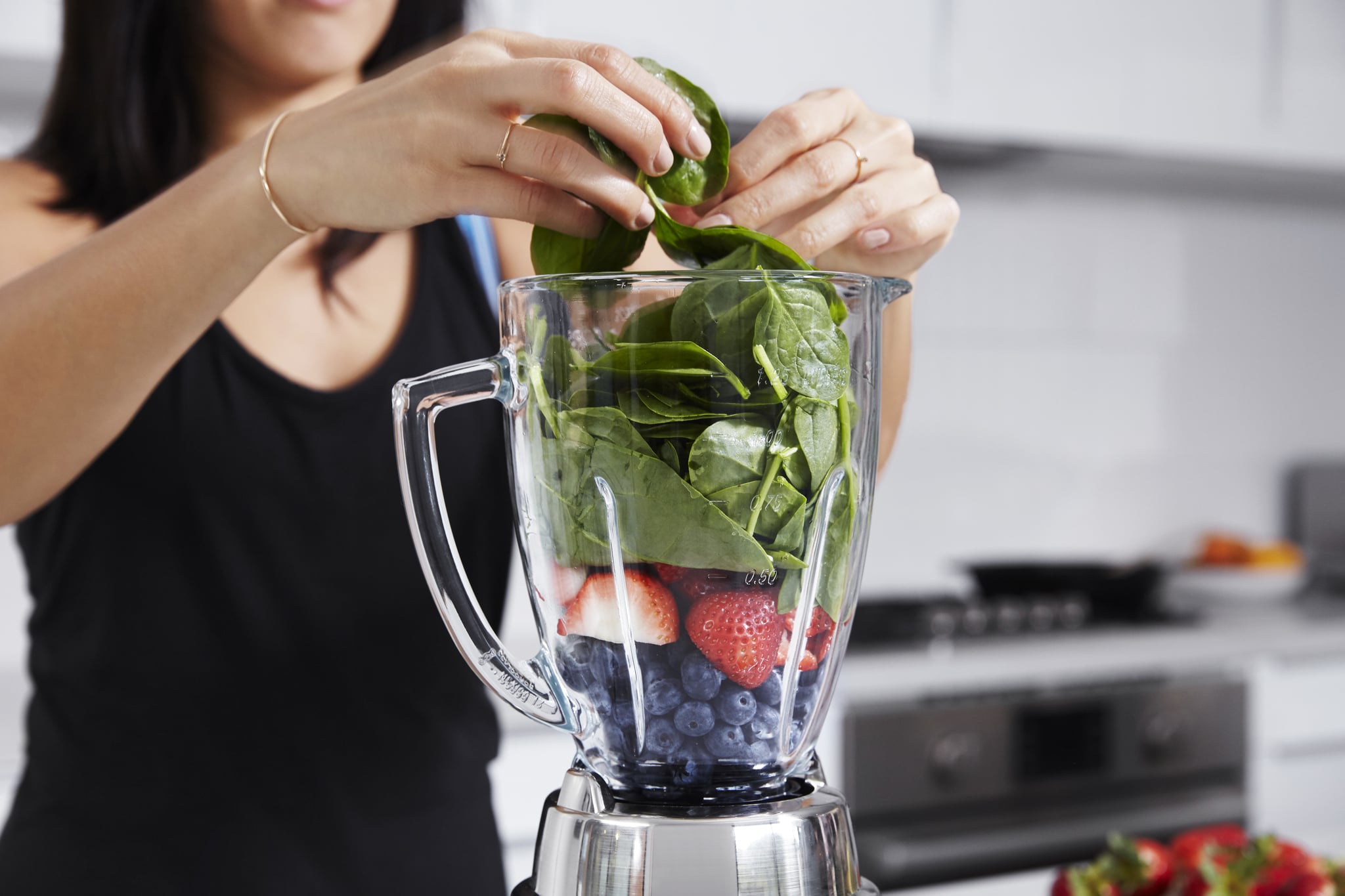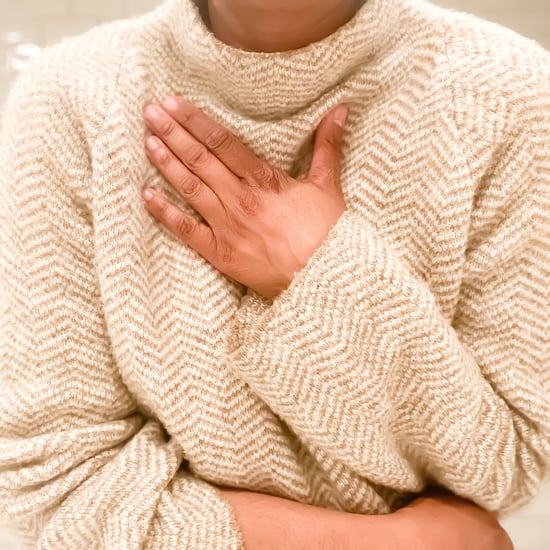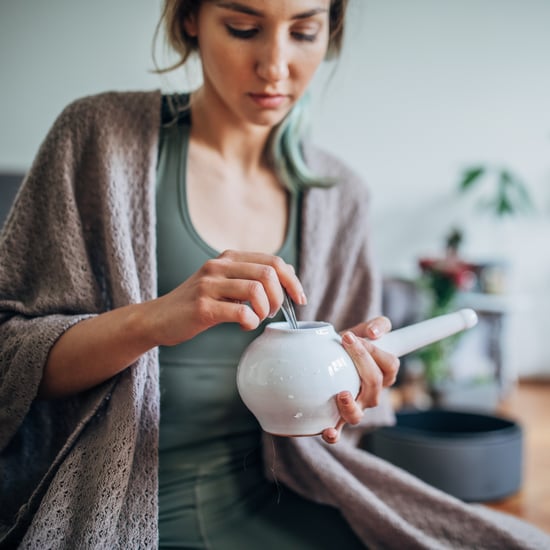Anti-Inflammatory Diet Review
4 Things I Learned From Following an Anti-Inflammatory Diet For a Week

Training for a marathon has a lot of caveats. The biggest one, of course, is that you actually have to run 26.2 miles in the end. But you have to do a lot of other things, too. You have to take care of your body and specifically make time for things like foam rolling. You also have to be mindful about what you eat. With the Boston Marathon on my bucket list, I knew it was time to get my mind and body right. Triggered by a little bit of pain in my lower back (screw you, arthritis) and my left hip (ugh, Spin classes), I wondered if there was anything I could do differently with my diet to better my situation. And that's when a friend of mine recommended eating an anti-inflammatory diet.
An anti-inflammatory diet, you say? I wondered, and then I did my research. Essentially, an anti-inflammation diet consists of the same healthy, unprocessed foods a lot of popular diets recommend, plus being mega attentive to nutrition, labels trying to avoid added, unnecessary sugar. The goal is eliminating foods known to trigger inflammation in the body. Although eating anti-inflammatory foods is definitely trendy, like Bulletproof coffee or the Paleo diet, research definitely reveals its total-body benefits. Studies show that unresolved inflammation has been linked to the early development of chronic disease.
"There are many foods that can help to combat inflammation in the body," says Alissa Rumsey, M.S., R.D., owner of Alissa Rumsey Nutrition and Wellness. "A diet that includes plenty of vegetables, fruits, whole grains, omega-3 fats, and antioxidants is your best defence against inflammation."
Building blocks. I could work with this, I thought. Rumsey gave me some more guidelines as to what specifically to hone in on, which seemed a lot like a Mediterranean diet. Think things like fatty fish, boat loads of fruits and vegetables, sweet potatoes, berries ("berries especially have been shown to have anti-inflammatory properties due to the high content of anthocyanin, a powerful phytonutrient"), and tomatoes — for their high concentration of lycopene, which reduces inflammation. Also: whole grains, olive oil, and foods with unsaturated fats, like avocado and seeds. On the "DO NOT EVEN THINK ABOUT IT" list: large amounts of refined sugar, highly processed foods (see ya later, pizza-Friday nights), and too much alcohol.
My task: stick to this clean way of eating for a week to see if I felt any all-over body shifts. Here are four lessons I learned from my week of eating an anti-inflammatory diet.
1. My protein shakes needed to change.
Even though I was piling loads of healthy things into my shakes on the regular, the first lesson was that in order to stick to the guidelines I had to ditch my typical protein powder. While it is plant-based, opting for a collagen instead was better for my overall gut health and still enabled me to get in 18 grams of protein (and 70 calories!) per serving. Plus the best thing about collagen? It doesn't taste like a thing. Huge fan of Vital Proteins Protein Peptides.
2. My lunches needed to change.
Raise your hand if you're a victim to the whole grab-something-from-any-close-lunch-spot, most-days-eat-it-at-your-desk situation (raises hand). My name is Emily, and the biggest lesson I learned was I needed to put more of a focus on what I was grabbing on the run for my midday meal. While I love to pack my lunch, most days I'm already lugging around a massive gym bag filled to the brim. Hence, the ordering/grabbing sitch.
Hesitant to get anything from shops or markets where I couldn't double-check ingredients lists, I leaned into salads a lot throughout the week. I liked that I could stare at the fresh ingredients myself as they went into the salad bowl. I also developed a thing of sorts for Sweetgreen's Steelhead, a trout that actually tastes just like salmon and is high in omega-3s.
3. Keep the right snacks around at all times.
There are two times during the day that I typically look around for something to munch on: around 10 a.m. (I wake up at six, after all) and after 4 p.m. before dinner. The girlfriend that tipped me off to the anti-inflammatory diet gave me a few suggestions for items to keep in my fridge (like Coyo, a no sugar added, coconut-based yoghurt alternative, and fresh sliced veggies) for these specific situations. I quickly learned that what I used to snack on (popcorn, too much fruit, protein bars that were high in unnecessary added sugar) was really just weighing me down by the end of the day.
Maybe it was the diet kicking in, or maybe it was simply scratching those protein bars from my day-to-day. Regardless, once I turned away from those, I felt a whole lot less bloated. As someone who is guilty of a two-a-day type of workout week, I felt less inclined to have to hit that nighttime workout. I started to feel light. But there was a catch: I also started to feel cranky.
4. The crash is real.
Envision a washing machine. The washing machine only cleans your clothes really well if you add soap, right? Well, throughout the week, I was slowly adding the "soap" (read: cutting out the bad foods) bit by bit. When the machine (read: my body) was loaded with soap (read: healthy foods), I expected to feel totally clean. Clear-headed. Fab-tastic. The catch: although I did feel less bloated, I felt cranky. I had headaches. I had eliminated unnecessary sugar from my diet, (as well as meats including chicken), and began to feel more lethargic than usual come 4 p.m. It's something I knew could happen, but was ill prepared for especially leading into a weekend long run. The run didn't go so well. By the end of it, I was drained. I sat down afterward with a friend in front of a salad toting chickpeas for days, when all I really wanted was a pizza.
Would I Do It Again?
Here's the thing: Eating this way is good for your body. I'll be the first to admit that even though I was totally spent on the run, I didn't feel the same kind of hip pain I had the week prior. My body felt better, I felt lighter, I just felt . . . drained. And so, I think like most good things it's about finding a compromise. Do I think if I continued on I'd feel stellar in about a week? For sure. And for that reason, I'll likely stick with some of the habits and foods going forward, especially the coconut yoghurt. But at the end of the day: it's about moderation. And something tells me pizza Fridays are good for my health, cheese and all.






